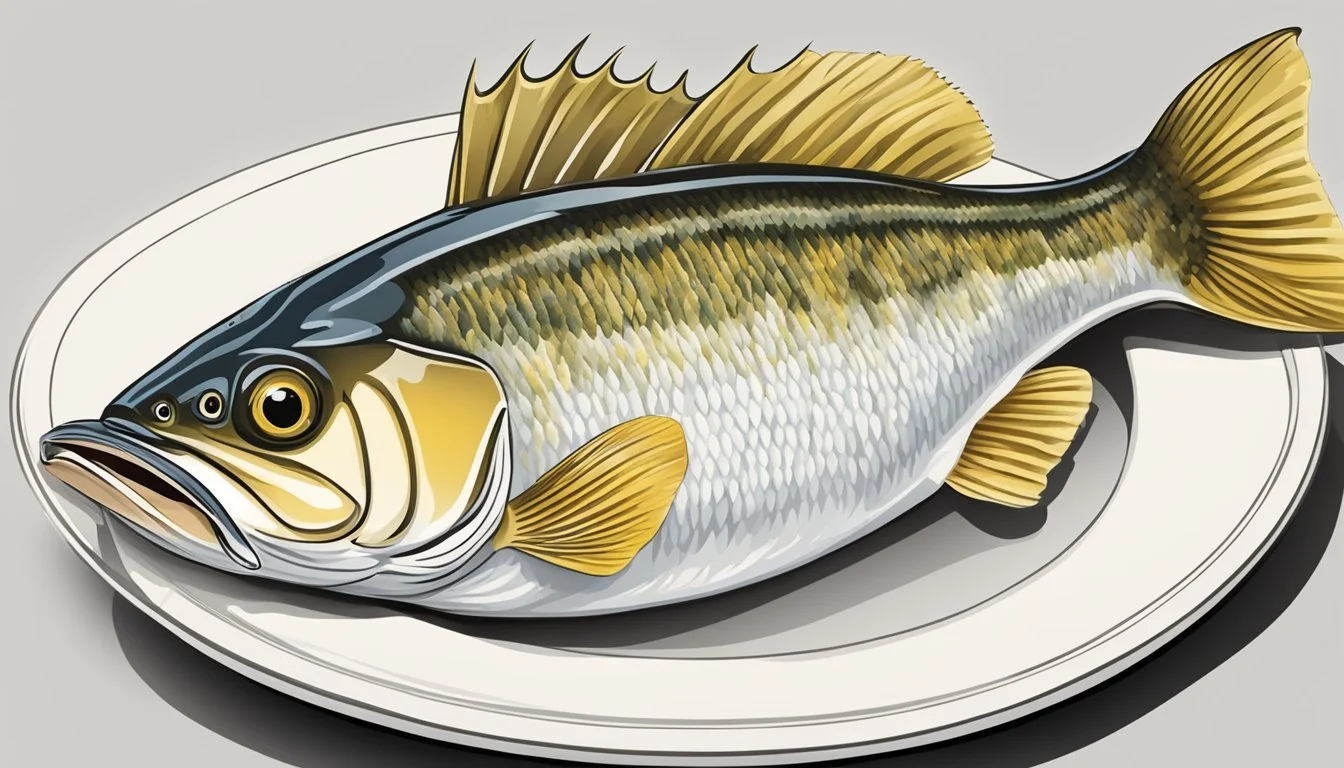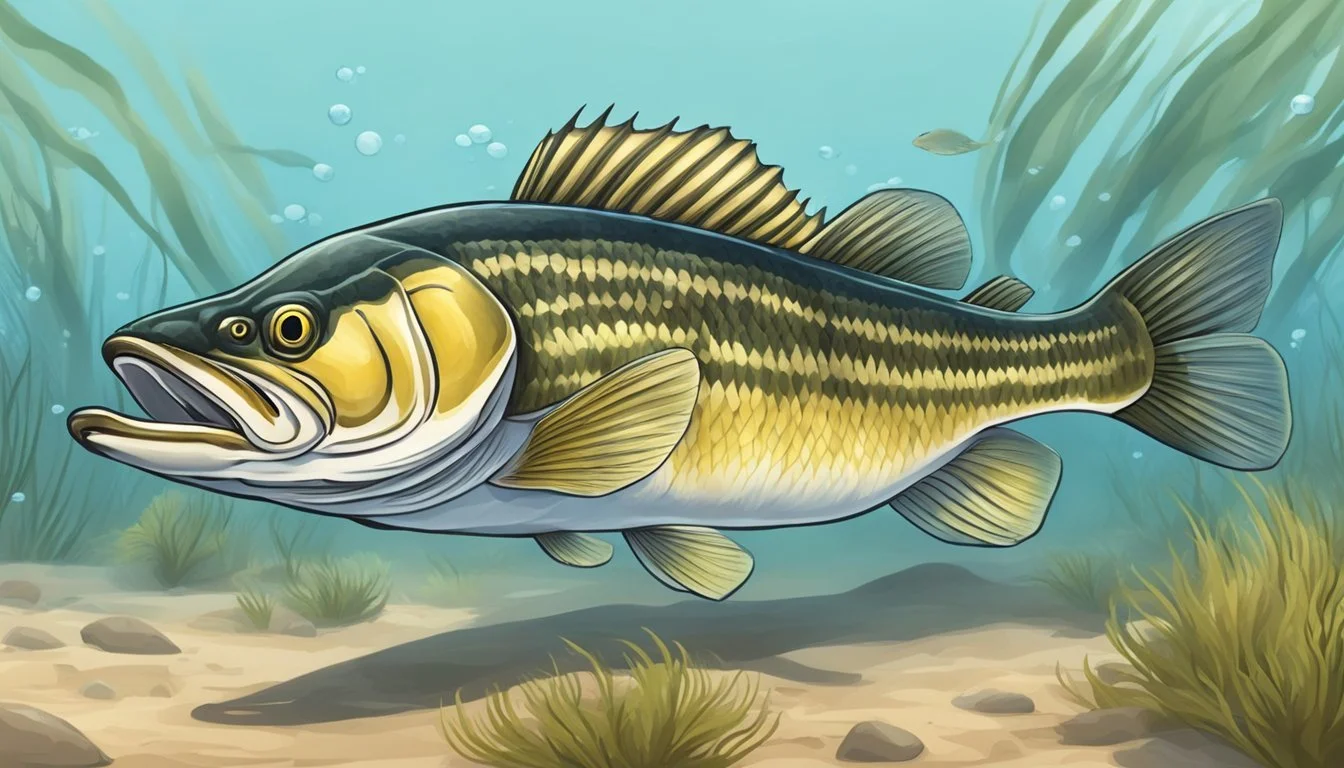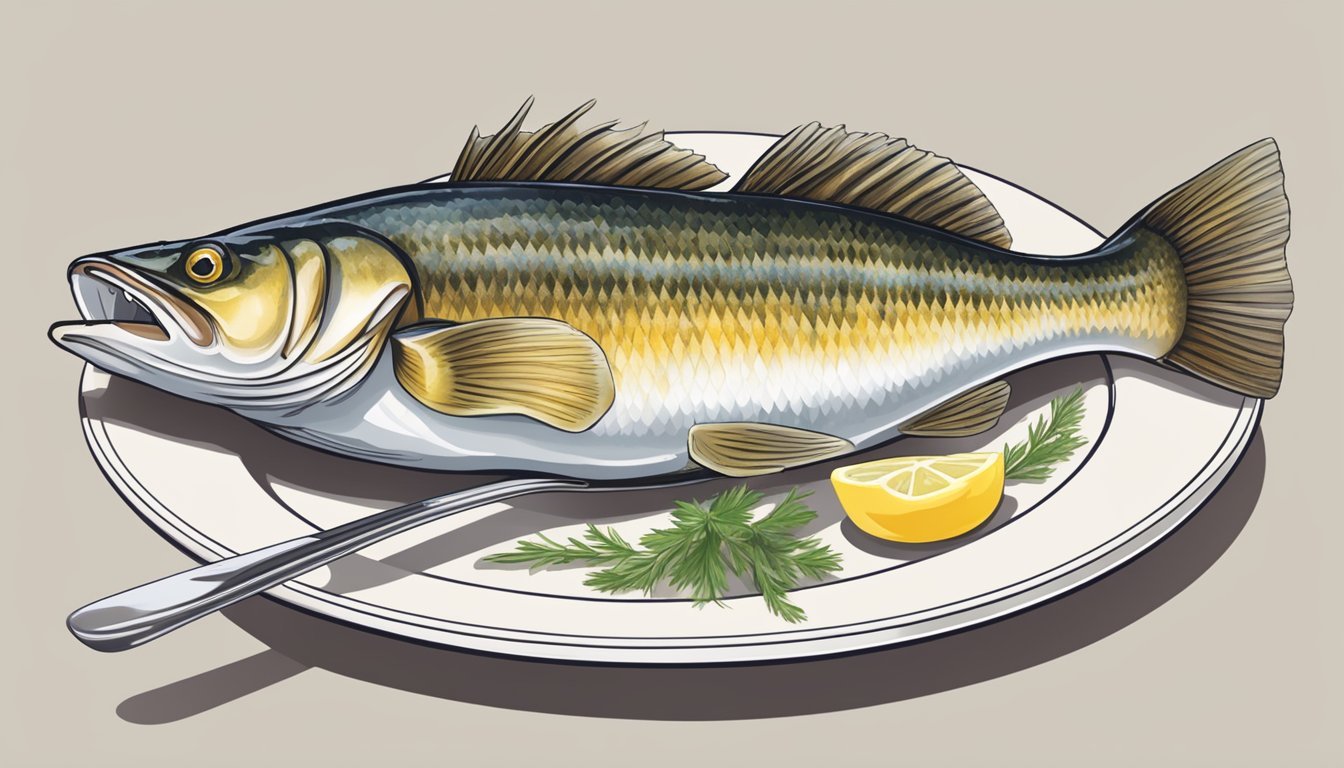How Do You Eat a Walleye Fish?
Preparing and Enjoying Your Catch
Eating walleye fish is considered a delightful experience by many seafood enthusiasts. Known for its mild, sweet flavor, and delicate texture, walleye is a popular freshwater fish (What wine goes well with fish?) that's not only praised for its taste but also for its versatility in cooking. They are often found in the cold waters of the northern United States and Canada, making them a staple in regional cuisines.
Walleye's nutritional benefits further add to its appeal. It serves as a great source of protein, essential for repairing tissues and building muscle, while being low in saturated fat. The fish is also rich in omega-3 fatty acids, which are crucial for maintaining heart health, supporting brain function, and contributing to overall well-being.
Cooking walleye allows for creativity due to its agreeable texture that pairs well with various ingredients and methods. Whether it's baked, grilled, or fried, walleye can be prepared with the skin on to achieve a crispy exterior while preserving its tender flesh. This white fish (What wine goes well with white fish?) can be included in an array of recipes to suit any palate, from hearty, comforting dishes to light, health-conscious meals.
Understanding Walleye
The walleye is a freshwater fish recognized for its distinctive coloration; their bodies exhibit a blend of gold and olive patterns, while their namesake 'walleye' references their unique, reflective eye shine. This adaptation assists in their nocturnal hunting. Commonly referred to as the yellow pike or pickerel, although true pickerel belongs to a separate genus.
Physical Characteristics
Color: Gold and olive hues
Eyes: Luminous, reflective quality
Teeth: Notable sharp teeth to capture prey
As predators, walleyes boast an impressive array of sharp teeth, signifying their role at the top of their food chain. Their diet predominantly includes smaller fish such as yellow perch and minnows, placing walleye within the perch family.
Size
Length: Can grow up to 80 cm (31 inches)
Weight: Average between 0.5 - 1.4 kg (1 - 3 lb), with some specimens exceeding 9 kg (20 lb)
Walleye are indigenous to North America, thriving in the lakes and rivers there. They are prized as game fish due to their delicate flavor and the challenge they present to anglers. Ice fishing walleye is a popular activity during the winter months in regions such as Canada, where the fish continue their hunt beneath the frozen surfaces.
Given their efficiency as predators and their preference for cooler, dimly-lit waters, understanding the behaviors and environments of walleye can greatly enhance an angler's success in capturing them. They exert significant influence on local aquatic ecosystems and are an essential species for both recreational fishing and ecological balance.
Habitat and Behavior
The walleye is a freshwater fish known for its distinctive eye shine and adaptable feeding habits. Understanding its spawning behavior, common habitats, and feeding preferences is essential for anglers and enthusiasts alike.
Spawning and Reproduction
Walleyes typically spawn in the spring when water temperatures are between 38 to 45°F. During spawning, they lay their eggs over substrates with adequate water flow, such as gravel or rock beds in rivers or weed beds, reefs, and shoals in lakes to ensure proper oxygenation and dispersal.
Common Habitats
These fish are primarily found in freshwater systems such as lakes and rivers. Common characteristics of walleye habitats include areas where the water depth and clarity allow for their unique vision to give them an advantage. They often inhabit waters near structural changes like drop-offs or underwater ridges where baitfish are likely to be found.
Feeding Habits
Walleyes are opportunistic predators when it comes to their diet. Early life feeding consists largely of plankton, but as they grow, they shift to feeding mainly on fish such as shad, minnows, and crayfish. They employ various hunting strategies including lying in wait near sand or gravel beds or active hunting using tools such as jigs or live bait such as leeches. Ice fishing is popular for targeting walleye during winter when they continue to actively feed under the ice.
Fishing for Walleye
When targeting walleye, anglers should focus on effective angling techniques, select the right tackle and bait, and identify the best fishing spots in lakes and rivers across regions like Michigan, Canada, and the United States. These elements are crucial for a successful catch.
Walleye Fishing Techniques
Understanding walleye behavior is key to choosing the right fishing technique. Jigging and trolling are two common approaches:
Jigging: Works well in both rivers and lakes. Use a vertical motion to mimic baitfish.
Trolling: Effective during warmer months. It allows covering more water and locating active walleye.
Tackle and Bait
The right tackle and bait can make a significant difference in walleye fishing. Anglers typically employ:
Light to medium action rods: For sensitivity and strength.
Monofilament or braided lines: Offering a balance between sensitivity and resistance to abrasion.
Soft plastic grubs and live bait: Like minnows or nightcrawlers, often tipped on jigs or used with spinners.
Bait selection often hinges on water conditions with brighter colors favored in stained water.
Best Fishing Spots
Walleye are found in various freshwater environments, but there are certain places they prefer:
Shallow waters in spring: For spawning activities.
Deep waters during the day: Especially in summer to stay cool.
Transition areas: Such as drop-offs and weed lines, are hot spots for walleye.
Key locations include the Great Lakes region in both the United States and Canada, with lakes in Michigan being renowned for walleye fishing.
Cleaning and Preparation
When preparing a walleye for cooking, proper cleaning and filleting are crucial. The process involves removing scales, bones, and any unnecessary parts of the fish, ensuring that the resulting fillets are ready for cooking.
How to Clean a Walleye
To clean a walleye, one begins by removing scales using a scaler or the back of a spoon. It is necessary to ensure the removal of all scales for a smooth eating experience. Holding the walleye by the tail, the scaler is run against the grain of the scales from tail to head. The fish should then be rinsed under cold water until the runoff is clear. Attention should be given to the mouth area to remove any debris or leftover bait.
Filleting Techniques
Essential Tools:
A sharp filleting knife
A cutting board
Paper towels or a clean cloth
Filleting Steps:
Initial Cut:
Start at the tail end and make an incision just above the spine.
Separating the Fillet:
Slide the knife along the top of the rib cage towards the head.
Removing the Fillet:
Once the knife reaches the head, the fillet should be gently separated from the body.
Skinning (Optional):
To remove the skin, place the fillet skin-side down and slide the knife between the flesh and the skin.
One should ensure that each filet is free of bones, particularly the small pin bones which can be felt with one's fingers and removed with tweezers. The resulting fillets are boneless, with the cheeks being a delicacy that can also be removed and savored.
Cooking Methods
When preparing walleye, choosing the right cooking method can enhance its delicate, sweet flavor. Whether baked, grilled, or pan-fried, each technique offers a unique taste and texture to this popular freshwater fish.
How to Bake Walleye
Baking is a simple and healthy way to prepare walleye. To oven-bake walleye, preheat the oven to 350° Fahrenheit and prepare a baking dish with foil, shiny side down. Season the walleye fillets to taste, then place them in the dish. Bake for about 10-15 minutes, or until the fish flakes easily with a fork. Thicker fillets may require additional time.
Baking Tips:
Preheat the oven before adding the fish.
Use foil to prevent sticking and to make cleanup easier.
Check the fish regularly to avoid overcooking.
Grilling Walleye
For a smoky flavor, grilling is an excellent choice. Preheat the grill to medium-high heat and lightly oil the grate with olive oil. Grill walleye fillets for 4-5 minutes per side, ensuring the internal temperature reaches 145° Fahrenheit.
Grilling Tips:
Brush the fillets with olive oil to prevent sticking.
Flip carefully to maintain the fillets' integrity.
Pan-Frying Walleye
Pan-frying delivers a crispy exterior and tender interior. Heat a skillet over medium heat and add olive oil. Once hot, add the walleye fillets, cooking for 3-4 minutes on each side until golden brown and cooked through.
Pan-Frying Tips:
Ensure oil is hot before adding the fillets.
Avoid overcrowding the skillet to ensure even cooking.
Each method—baking, grilling, or pan-frying—offers a distinct texture and flavor to the walleye. Cooks can choose based on their desired outcome and dining preference. Using high-quality olive oil for grilling or pan-frying can add a subtle richness to the fish, complementing its natural flavors.
Flavor and Seasoning
Walleye fish is treasured for its delicate, white flesh that possesses a subtle, mild flavor lending itself well to a variety of seasonings. When seasoned properly, walleye’s flavor can be enhanced without overpowering its natural taste.
Optimal Seasonings:
Garlic and Herb Blend: Enhances the natural flavor with a savory touch.
Lemon Pepper Seasoning: Adds a zesty twist, complementing the mild fish.
Seasoning Methods:
Dry Seasoning: Before cooking, one can dust walleye fillets lightly with a mixture of salt, black pepper, and additional spices as desired. It is important to strike a balance in seasoning to not overshadow the fish's inherent taste.
Marinades: A simple marinade could include olive oil, lemon juice, and a touch of black pepper. This not only infuses flavor but also keeps the fish moist during the cooking process.
Post-Cooking Enhancement: After cooking, a squeeze of lemon juice or a drizzle of melted butter can be used to finish the dish, often enhancing the walleye’s flavor profile and adding a rich dimension.
Nutritional Bonus:
Walleye is not only flavorful but also a healthy choice. It contains beneficial omega-3 fatty acids and is a good source of iron.
Cooking walleye does not require heavy seasoning, and its white, flaky texture is perfect for absorbing flavors while maintaining its character. Whether baked, broiled, or pan-fried, one can experiment with various herbs and spices to suit their palate without compromising the integrity of the fish.
Nutritional Information
Walleye fish is recognized for its substantial contribution to a balanced diet through its lean protein, minimal fat content, and significant omega-3 fatty acid composition. It is a sound choice for individuals seeking to enhance their diet with nutritious seafood.
Healthy Diet Contributions
Walleye stands out in a healthy diet primarily for its protein content, which totals about 19.1 grams in a 3.5-ounce serving, accounting for 34% of the daily required levels. This protein is complete, which means it includes all the essential amino acids needed for growth and body repair. Additionally, the low fat content at roughly 1 gram per 3 ounces ensures walleye is a lean option ideal for heart health.
Protein: Vital for tissue repair and muscle building
Omega-3 Fatty Acids: Support heart and brain health, may counteract anxiety and depression
Low in Calories: Promotes weight management with only 79 calories per 3-ounce serving
Vitamins and Minerals
Walleye is also enriched with a range of vitamins and minerals. It is a good source of vitamin D, often nicknamed the 'sunshine vitamin,' which is important for bone health and calcium absorption. It also contains a respectable amount of vitamin A, beneficial for the immune system, and vitamin E, which helps combat oxidative stress.
Nutrient Benefits Vitamin A Supports vision and immune system function Vitamin D Aids in calcium absorption, bone health Vitamin E Protects against oxidative stress Selenium Plays a role in thyroid and immune function Magnesium Important for heart health and bone integrity Phosphorus Supports teeth and bone structure Potassium Helps maintain normal blood pressure levels Zinc Essential for immune system and metabolism
Understanding Mercury Levels
While walleye fish provides numerous health benefits, it's important to be aware of mercury levels in fish. Generally, walleye has moderate mercury content which can vary depending on the environment it was caught or raised in. It's advised that individuals, particularly pregnant women, young children, and those with compromised liver function, be mindful of their consumption to mitigate potential risks of mercury, which can affect brain development and contribute to age-related diseases. It's prudent to consult guidelines for fish consumption issued by health authorities to ensure safe dietary practices.
Factor Consideration Age-Related Diseases Mercury can contribute to these, moderate consumption advised Brain Development Critical for young children, mercury can affect adversely Heart Risks Omega-3s in walleye help reduce heart disease risks Sunlight Exposure and Vitamin D Walleye is a good source of Vitamin D, especially in low sunlight areas
Serving and Presentation
When serving walleye, it's essential to present the fish in a manner that showcases its freshness and the care taken during preparation. Walleye fillets should be placed with intention on the plate, their golden, crispy skin inviting a bite.
Plating Method:
For a visually appealing presentation, rest the walleye fillets atop a bed of complementary sides such as herbed rice, steamed vegetables, or a fresh salad.
Garnish with a wedge of lemon or a sprinkle of chopped parsley to add a pop of color and provide a zesty flavor contrast.
Texture and Flavor:
The walleye's flaky texture and moist interior are best preserved by cooking the fish until it just reaches the point of opaqueness.
To ensure the seafood maintains its palatability, avoid overcooking, which can lead to dryness and toughness.
Eating Experience:
When eating walleye, one should use the appropriate utensils to gently separate the fillet's segments, revealing the perfectly cooked interior.
Pair the fish with a crisp white wine such as a Sauvignon Blanc to enhance the overall flavor profile.
Texture Contrast:
For an added textural contrast, consider incorporating toasted almonds or breadcrumbs to the top of the fillets.
By focusing on freshness, cooking to the right texture, serving with thoughtful garnishes, and ensuring a moist palate, the experience of eating fish, particularly walleye, becomes not just a meal, but a commendable culinary event.
Walleye Recipes
Walleye is a versatile fish that can be enjoyed in a variety of ways, providing a mild, sweet flavor that pairs well with numerous ingredients and cooking methods.
Classic Walleye Dishes
Baked Walleye: A simple preparation involves seasoning walleye fillets with salt, pepper, and a hint of garlic, then baking them at 350° Fahrenheit until the flesh is flaky and opaque. This method accentuates the fish's natural flavors.
Fried Walleye: Often coated with a mixture of seasoned flour or breadcrumbs and fried until golden brown, this traditional method gives the fish a crispy exterior while maintaining a moist interior.
Creative Cooking Ideas
Grilled Walleye: Marinating walleye fillets in a blend of lemon, herbs, and olive oil before grilling over medium heat results in a delicious charred flavor.
Walleye Cakes: A twist on classic crab (What wine goes well with crab?) cakes, combining flaked walleye with bread crumbs, mayonnaise, mustard, and seasoning, formed into patties and pan-fried till crisp.






